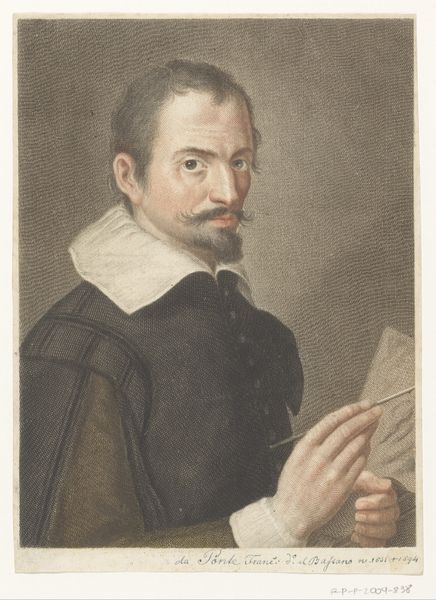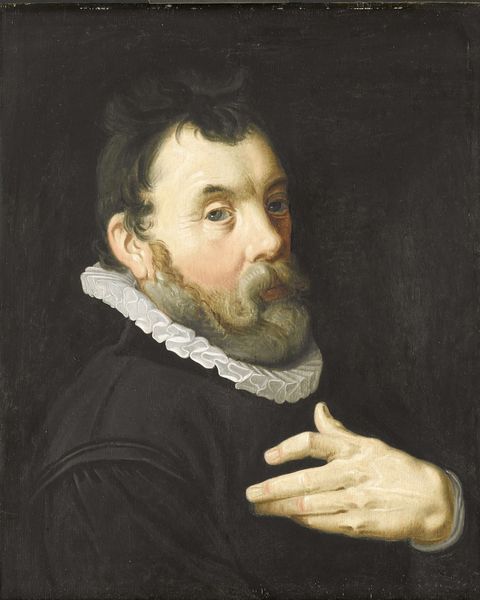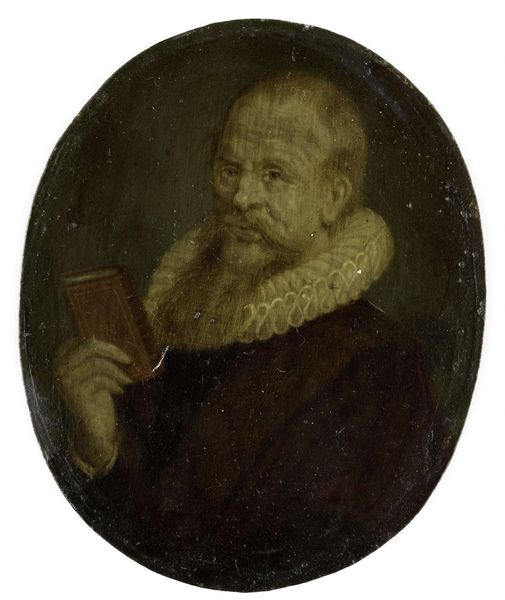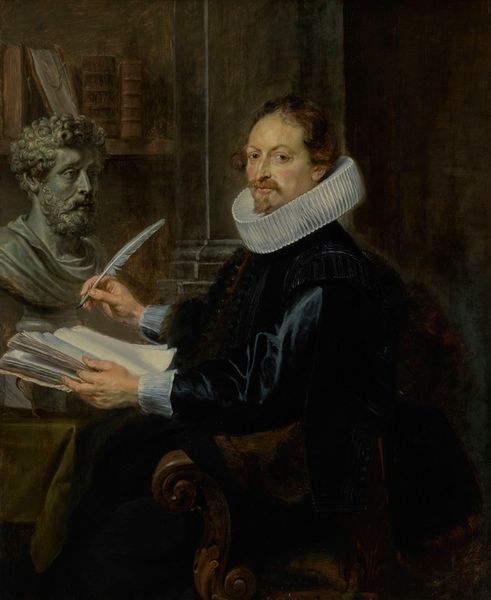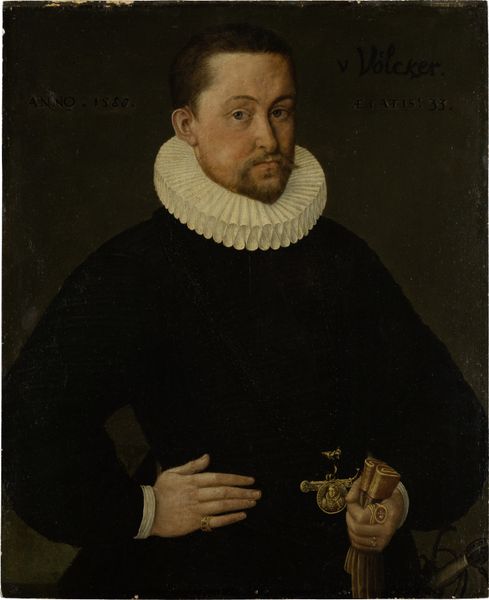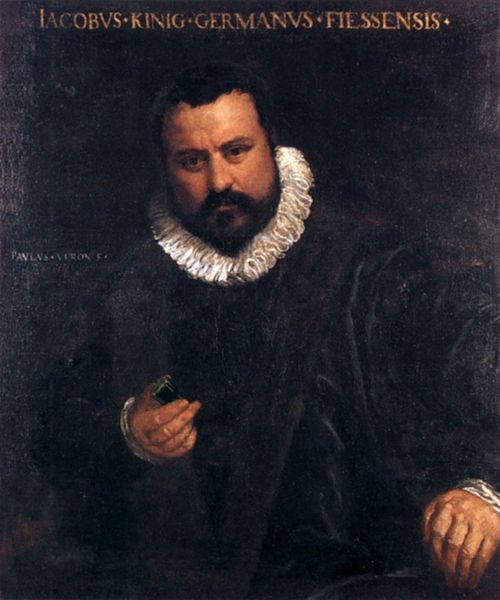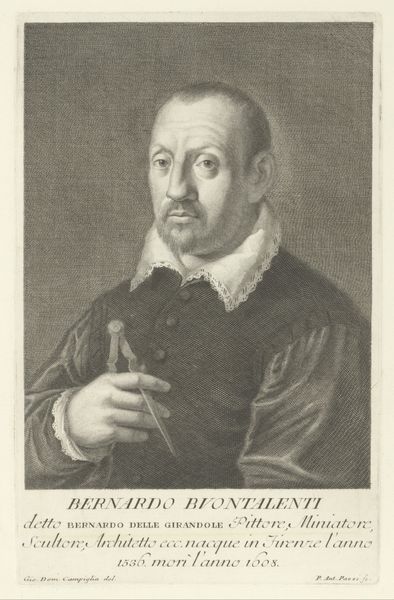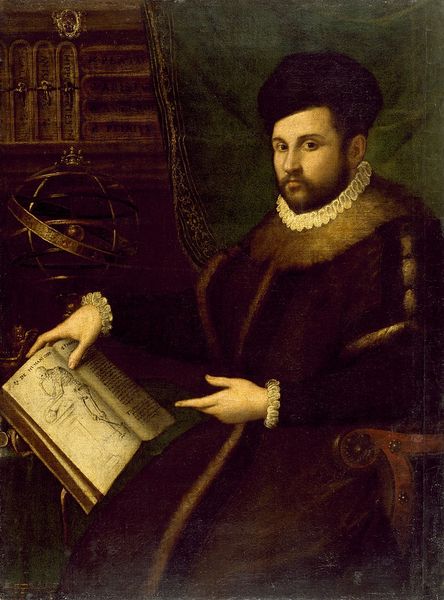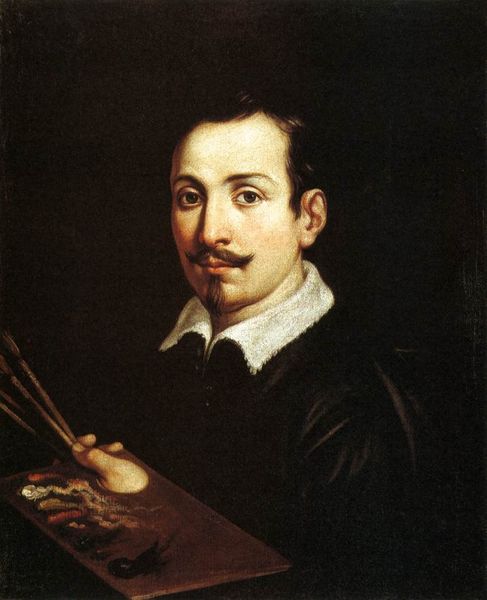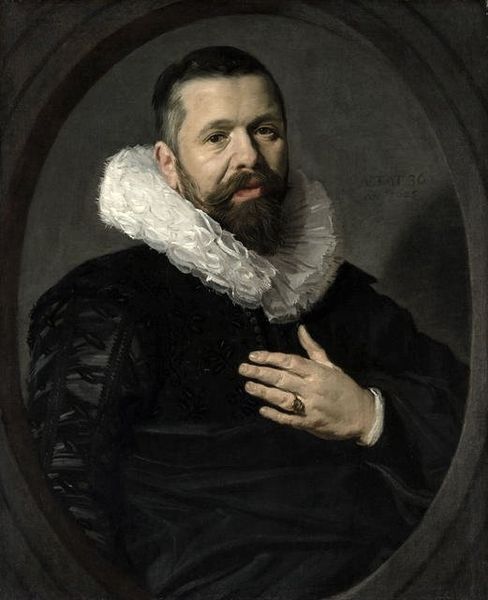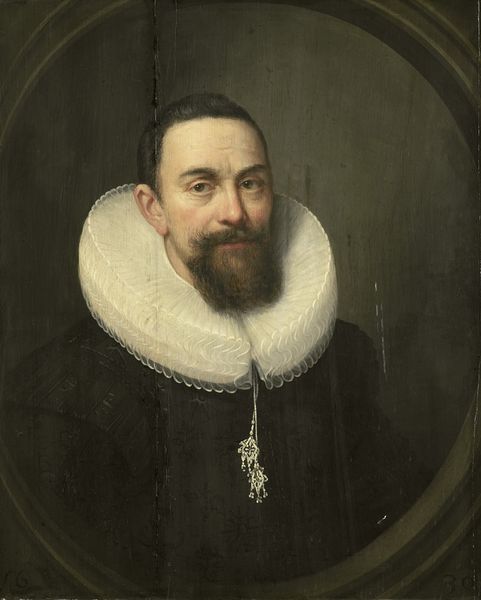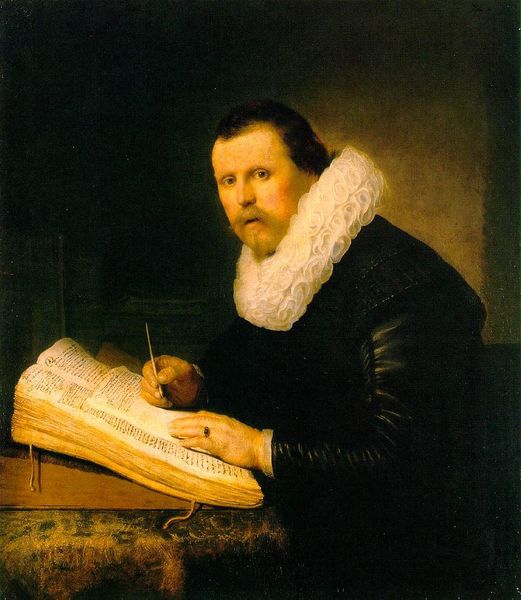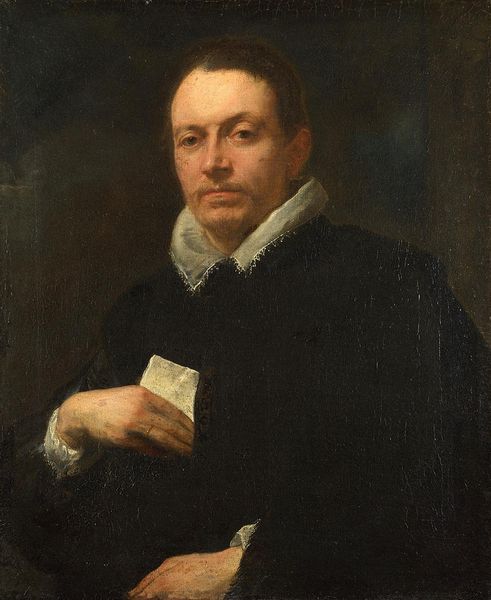
painting, oil-paint
#
portrait
#
portrait
#
painting
#
oil-paint
#
mannerism
#
figuration
#
realism
Dimensions: 116.2 x 95.6 cm
Copyright: Public domain
Curator: This is Bartolomeo Passerotti’s "Portrait of a Scribe," painted around 1560. Notice how he captures the sitter amidst the tools of his trade. Editor: It strikes me immediately with its dark and restrained mood; a somber dignity almost. I’m curious about the visible textures and how the artist uses light to define form, particularly in the ruff and the hands. Curator: That restrained mood aligns with the prevailing humanist values of the era, where erudition and intellect were increasingly celebrated as civic virtues. Depicting the scribe, brush in hand, signifies the elevated status associated with literacy and record-keeping. Editor: And consider the very materiality of writing. Oil paint allows for that incredible detail, to distinguish between paper and quill and even different kinds of ink, while elevating something as functional as writing into an art object. I am interested in the physical presence and purpose behind all of that detail. Curator: Indeed. But look also at what's being presented; not just the scribe's role, but a clear statement about the institutional importance of scribes in Renaissance society, particularly within burgeoning state bureaucracies. Art serving politics, as it so often does. Editor: Of course. Still, the tangible element of crafting and mark-making is essential here. The redness of his sleeves. How might access to vibrant colors, like that deep red, affected art production and possibly, you know, the sitter's socio-economic positioning? Curator: Undoubtedly, access to such pigments speaks to status. This was intended for a specific audience, confirming pre-existing ideas about labor and meritocracy. Editor: Thinking of artistic skill here: all of the subtle manipulations required to convey that knowledge onto a 2D plane. Curator: Artworks are never made or viewed in isolation. By understanding art through history and material production, we can then glean much wider insights into culture. Editor: Precisely. Looking closer, with these dual perspectives, changes our whole viewing experience, deepening our understanding of Passerotti's artwork.
Comments
No comments
Be the first to comment and join the conversation on the ultimate creative platform.
